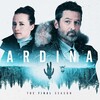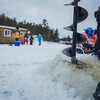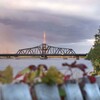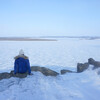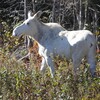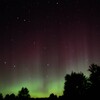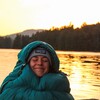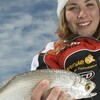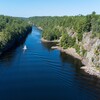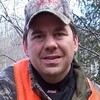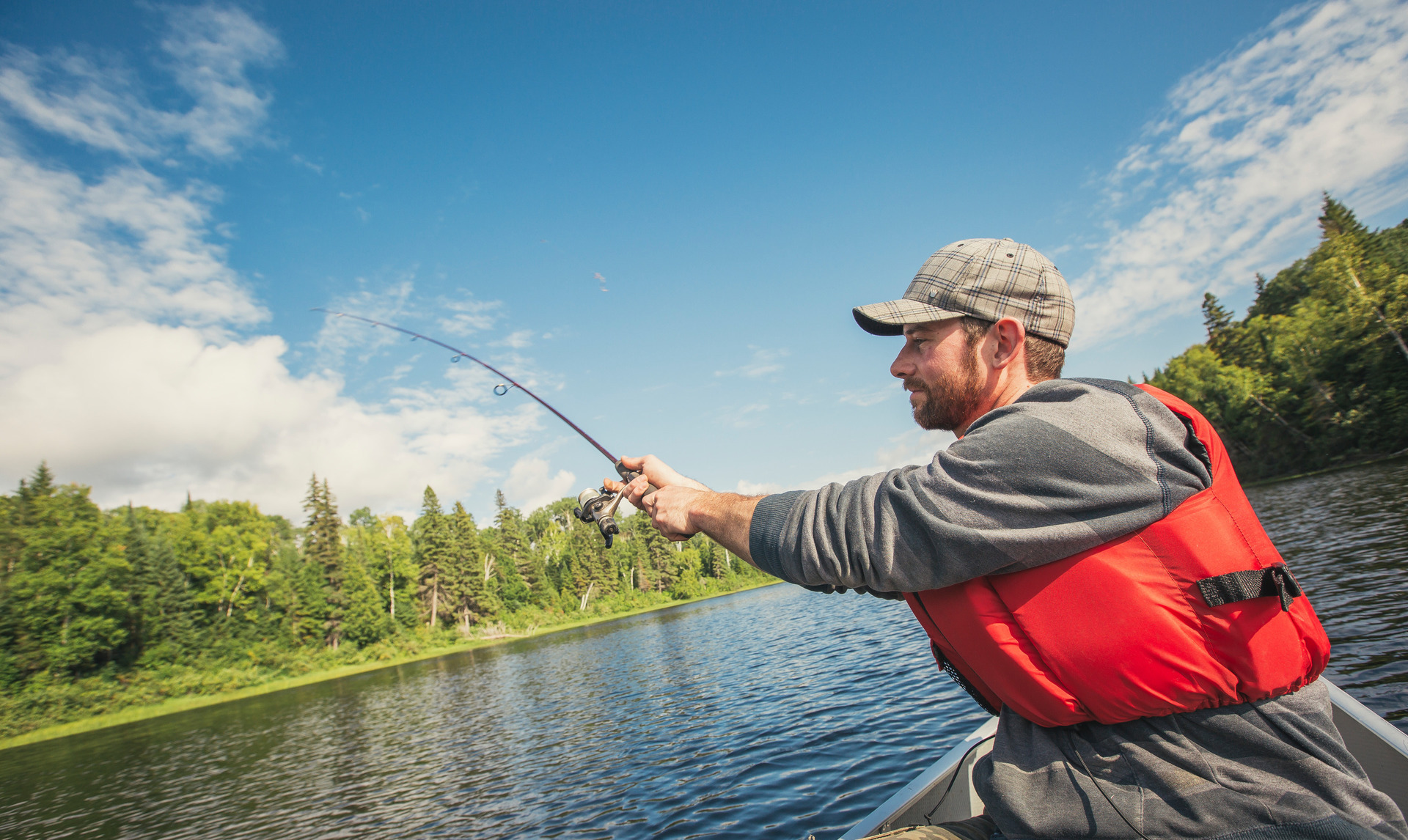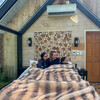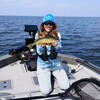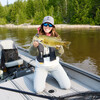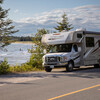Everything you need to know about catching summer Brook Trout
Summer is generally considered “off season” in the trout waters of Northeastern Ontario, with several limnological forces conspiring to make fishing more daunting.
For the brook trout enthusiast “in the know,” however, it is an ideal time to hit the water for some real success. With less angling completion on most lakes, you pretty much have the pick of the litter when it comes to fishing opportunities. Most anglers have switched to warm water species like pike and bass, and when the cat’s away the mice shall play. This is the perfect time to hook some truly giant brookies when no one is around.
Since the speckled trout, brook trout (charr), or salvelinus fontinalis as it's known scientifically, is a cold-water species by nature, warm summer water can create difficulty for anglers, making these beautiful fish tougher to catch as they drop into the lake’s lower reaches and away from the average fishing tackle. Understanding where, and how, to locate these shy summer fish will put a lot more trout in your creel.
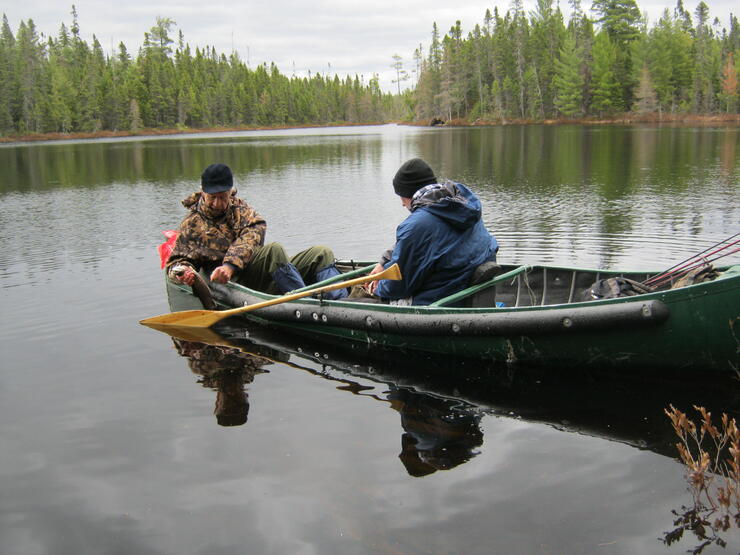
Photo provided by Jeff Morrison.
Summer holding areas
Since the brook trout is perhaps the coldest-water-loving fish in the northeast besides lake trout, with preferring temps in the 10 -15° C range, you’ll need to go deeper in the summer months to find them. With most lake surface temperatures over 20° C by this time, you will not find “specks’ rolling on the surface to snatch flies as you would earlier in spring.
I try to focus on water depth in the 25’ – 40’ range which usually boasts optimal feeding temperature. Those areas are just outside of what I call the 10 - 15’ spring run depth, which is usually 30’+ from shore on most lakes. The use of a sonar or fish-finder can help to pinpoint the best depth to target and improve your chances.
Warm water techniques
Locating and sticking to proper water depth can be a daunting task, especially in trout lakes with a myriad of submerged logs, trees, and rocks near the bottom. You will get hooked up on underwater structures at this time of year; it’s the cost of doing business. Bring lots of extra tackle and line with you. Copious swivels, spoons, spinner jigs, and tons of hooks are also a must.
I usually start off my summer fishing day by slow trolling with large spoons and snelled hooks of 12-16” monofilament leads. The use of old-school trolling or “keel” sinkers allows my spoons to drop into the preferred depth range. Once a get a strike or catch a fish, I will stop and cast smaller spoons or a jig in the same area.
Low and steady is the key to landing lots of mid-summer brookies. The fish are down there; you just need to find them and get them to bite.
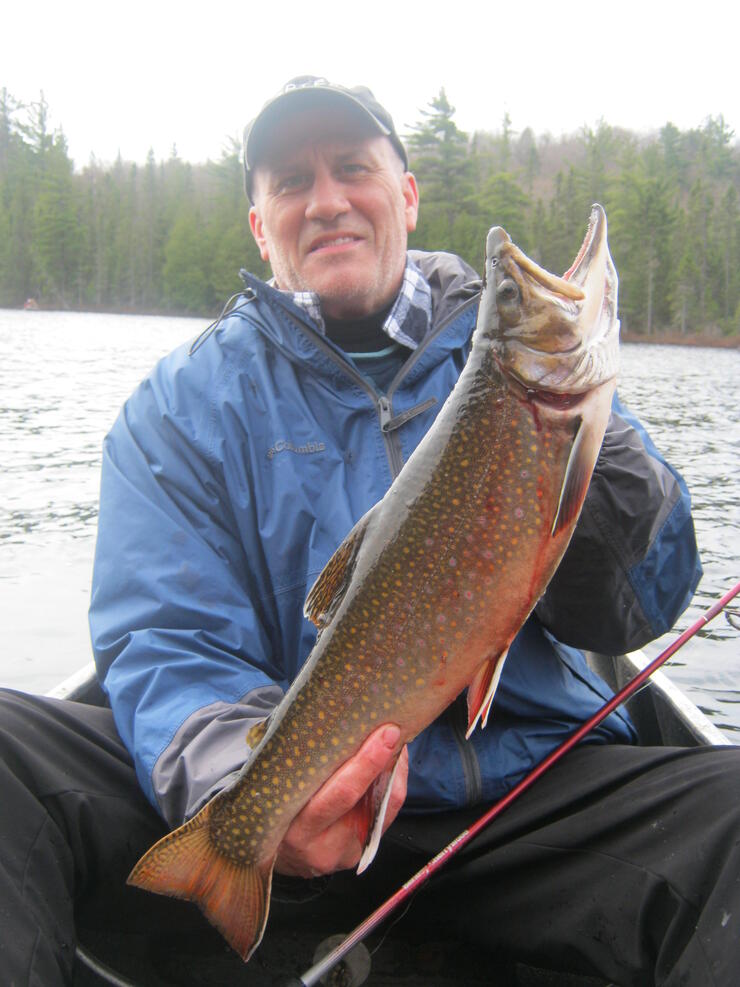
Photo provided by Jeff Morrison.
Thermocline understanding
That mysterious thin band of lake water which separates the “mixed” upper portion of the lake and the deep, cold water column, is known as the thermocline. During the summer months, it is usually 25-30 feet down in the majority of smaller trout lakes and is key to understanding the feeding behaviour of summer trout. Since most brookies “hang out” at depths from the height of the thermocline and deeper, and only ascend above that level occasionally to feed, you need to keep your lure presentations in this depth range whenever possible.
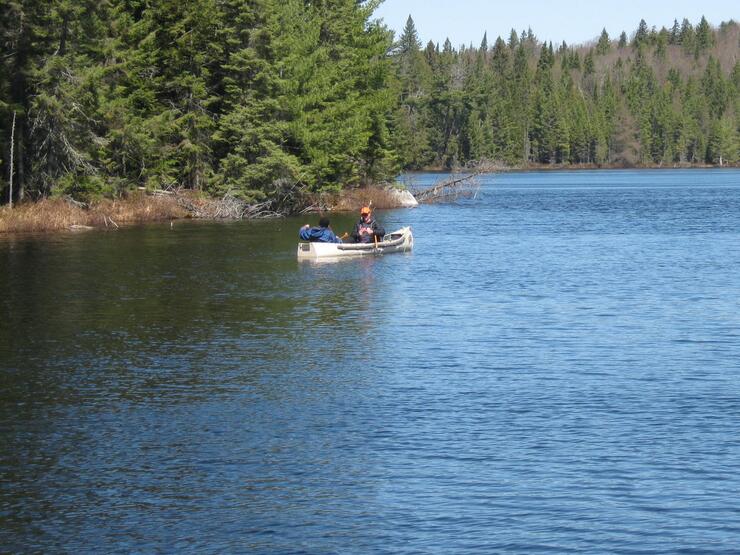
Photo provided by Jeff Morrison.
be bear aware
Now you’ve located a nice, quiet, out-of-the-way lake to pursue some warm-weather trout, so what are the concerns? With black bears out on the prowl for food and some berry crops already fizzled out, bear encounters are more frequent posing an undeniable hazard for any anglers heading out into bear country this summer. Aerosol deterrents like bear spray should be carried at all times while travelling to, and from, your summer trout lake.
Also be sure to announce your presence by breaking brush, walking loudly, and travelling in groups. During portages, assign the first person in your group on the trail as the bear spray holder. A black bear encounter is certainly rare but can be a dangerous hazard of summer trout fishing, and it’s good to be Bear Aware.
Brook Trout lodges
Lodge owners in Northeastern Ontario who cater to brook trout anglers during the peak spring season often need to be asked about summer opportunities on their territory. Be sure to inquire first before booking your trip. A summer brook trout trip is fulfilling on many levels, the challenge is at top of the list. Check out these great fishing lodges.
The Ontario Ministry of Natural Resources and Forestry (MNRF) has put together a terrific brook trout reference guide for any would-be trout anglers.
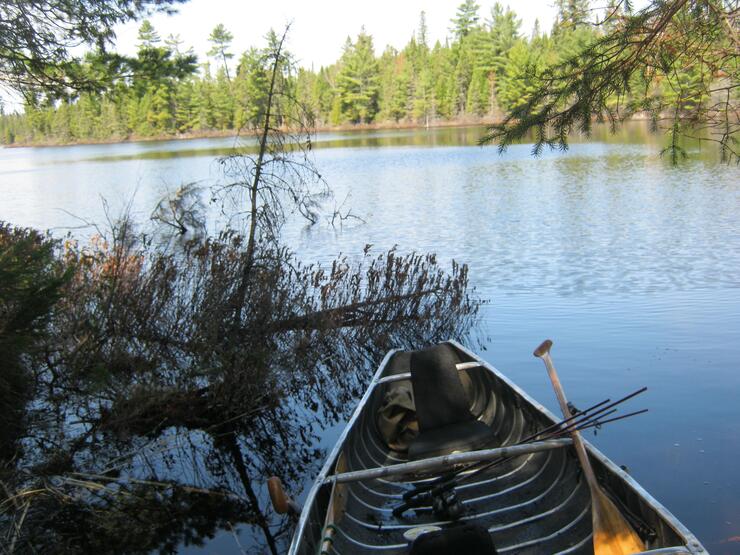
Photo provided by Jeff Morrison.
cooking your catch
Try this delectable trout recipe, featured in my award-winning Canadian Fishing Cookbook. This brook trout sauté will have dinner guests swimming back for more.
Brook Trout Sauté (Serves two)
Ingredients:
- 2 × 10” to 14” brook trout, cleaned with head & tail removed
- 3 Tbsp olive oil
- 2 shallots, thinly sliced
- 1 garlic clove, sliced
- 2 cups white wine, divided
- ½ tsp dried thyme salt and pepper
Heat oil in a medium skillet. Add shallots and garlic and cook for 10 minutes. Increase heat and add 1 cup wine; cook until reduced to a syrupy consistency. Add 1 cup wine, thyme, salt & pepper; let simmer for 4 minutes over medium. Remove pan from heat, then add trout. Allow fish to simmer for only a few minutes and baste with the surrounding liquid. Cook until fish flakes easily with a fork, move to serve plates and enjoy!
trout regulations
Trout fishing in Northeastern Ontario (Zone 10 & 11) remains open until September 30 with catch limits of five brook trout for the Sport fishing license, and two trout with the Conservation license.
Please note that in Zone 11, the rules are as follows:
- S - 5; not more than 1 trout greater than 31 cm (12.2 in.)
- C - 2; none greater than 31 cm (12.2 in.)
For more information on trout regulations in the northeast click here.
Recommended Articles
The Seven's Best Hikes, Biking Trails and Lakes

7 Best Spots to Check Out in The Seven

Budget Bliss: Explore Northeastern Ontario Without Breaking the Bank

Bring Your Fam!

Time to Unwind: 6 Spa Havens to Discover In The Seven
5 Amazing Places to SUP in Northeastern Ontario

5 Amazing Bike Rides to Discover

Northern Lights in Northeastern Ontario

Northeastern Ontario's Best Pride Festivals

Fish for one of the World's Rarest Species of Trout

An Insider's Guide to Manitoulin Island

6 Small-Town Gems to Explore in Northeastern Ontario

11 Best Things to Do in Kapuskasing, Ontario




